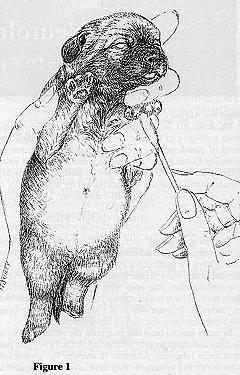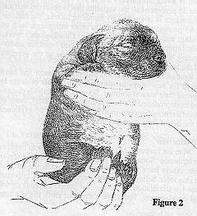

Early Neurological Stimulation
Early neurological stimulation was developed by the U.S. Military canine program to give puppies an advantage in life. We use these techniques on our puppies here at Nevena's Truelove Havanese, because we think that it helps our puppies in the future. Dr. Carmen Battaglia endorses this program on his website "Better Breeding Dogs”, and a full article on Early Neurological Stimulation can be found at http://www.betterbreedingdogs.com/achiever.html
I have included the 5 exercises performed on each puppy every day from 3-16 days old.
1. Tactile stimulation
Holding the pup in one hand, the handler gently
stimulates (tickles) the pup between the toes
on any one foot using a Q-tip. It is not necessary
to see that the pup is feeling the tickle.
Time of stimulation 3 – 5 seconds.
2. Head held erect
Using both hands, the pup is held perpendicular to
the ground (straight up), so that its head is directly
above its tail. This is an upwards position.
Time of stimulation 3 – 5 seconds.
3. Head pointed down
Holding the pup firmly with both hands, the head is
reversed and is pointed downward so that it is pointing
towards the ground. Time of stimulation 3 – 5 seconds.
4. Supine position
Hold the pup so that its back is resting in the palm
of both hands with its muzzle facing the ceiling.
The pup while on its back is allowed to sleep struggle.
Time of stimulation 3-5 seconds.
5. Thermal stimulation
Use a damp towel that has been cooled in a
refrigerator for at least five minutes.
Place the pup on the towel, feet down.
Do not restrain it from moving.
Time of stimulation 3-5 seconds.
Five benefits have been observed in canines that were exposed to the Bio Sensor stimulation exercises:
1. Improved cardiovascular performance (heart rate)
2. Stronger heartbeats.
3. Stronger adrenal glands
4. More tolerance to stress
5. Greater resistance to disease
In tests of learning, stimulated pups were found to be more active and were more exploratory than their non-stimulated littermates over which they were dominant in competitive situations.
Secondary effects were also noted regarding test performance.
In simple problem-solving tests using detours in a maze, the non-stimulated pups
became extremely aroused, whined a great deal, and made many errors.
Their stimulated littermates were less disturbed or upset by test conditions, and when comparisons were made, the stimulated littermates were more calm in the test environment, made fewer errors and were only occasionally distressed when stressed.




